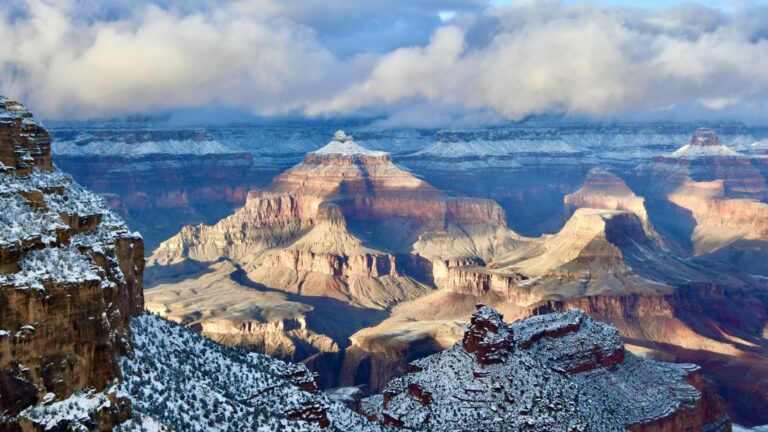Loving Parks to Death? Managing Visitor Expectations
The NPS mission directs park managers to provide visitors opportunities to enjoy a park’s natural and cultural resources without allowing that enjoyment to impair or fundamentally and irreparably damage park resources and values. To carry out this important mission, park units employ a Visitor Use Management (VUM) planning process to protect experiences and natural and cultural resources for generations to come.

National parks hit the headlines and social media forums over the past few summers for implementing day use reservation systems in response to long lines that formed at park entrance stations and overcrowding at popular park areas. Parks throughout the United States began using the systems for a variety of reasons related to increases in visitation, some of it because of the COVID-19 pandemic. Outdoors, and by inference, National Parks, provided a safe outdoor space to gather and get out of your house.
For over 100 years, Grand Canyon National Park visitors have enjoyed diverse recreational experiences, from natural beauty and wonder to solitude and challenge. Grand Canyon Conservancy members, with long canyon relationships, probably have a tale or two to share about their own observations and experiences regarding the increased use and popularity at the park especially leading up to the National Park Service (NPS) Centennial.
Reservations, or managed use access systems, are an example of a management tool superintendents can consider using to adhere to the NPS mission to balance the impacts of overcrowding and overuse at parks. The NPS mission directs park managers to provide visitors opportunities to enjoy a park’s natural and cultural resources without allowing that enjoyment to impair or fundamentally and irreparably damage park resources and values. To carry out this important mission, park units employ a Visitor Use Management (VUM) planning process to protect experiences and natural and cultural resources for generations to come.
For the NPS, VUM is a proactive and adaptive process that allows us to manage characteristics of visitor use and the natural and managerial setting using a variety of strategies and tools to achieve and maintain desired resource conditions and visitor experiences.
Taking a proactive approach means that park specialists are gathering information and designing management strategies to anticipate potential problems and take steps to prevent them before they arise. The goal is to prevent, rather than react to, irreversible resource and experience degradation.
It’s difficult to plan for the unknown. By monitoring the conditions of resources and visitor experiences and comparing those to defined desired resource conditions, park managers can implement measures to influence visitor use patterns or adjust management strategies to better meet desired conditions in the future.
Desired conditions are aspirational statements describing the resource conditions, visitor experiences and opportunities, and facilities and services that park managers strive to achieve and maintain for a particular area. Desired conditions may be descriptive of an area as it exists currently, or they can present a desired future vision to work towards.
Desired Conditions for Grand Canyon
The park has a portfolio of management plans covering many topics which guides park manager’s decisions. The two central documents that are the backbone for planning are the park’s 1995 General Management Plan and 2017 Foundation Document. The General Management Plan describes a wide range of desired conditions for visitor experiences in different areas of the park.
Desired conditions for the South Rim developed areas include diverse opportunities to view the canyon through direct access to the rim, where panoramas of the canyon provide the park’s aesthetic, inspirational, and emotional appeal. While accommodating many visitors, the South Rim experience should include minimizing dense crowds, interpreting and maintaining the integrity of extensive cultural resources, and encouraging alternative transportation options. Visitors should be able to experience solitude in natural settings as well as social exchange in developed areas.
Those conditions contrast with the desired conditions identified for the North Rim developed areas. The North Rim experience is focused on enjoying the serene, natural environment and sweeping canyon views with a relaxed, uncrowded feeling. The North Rim should maintain a low-key and uncrowded atmosphere that offers visitors opportunities to be intimately involved with the environment. Visitors should be able to experience natural sights and sounds with little or no intrusion from other people in many areas of the North Rim. A sub-district of the North Rim, Tuweep, is identified as a unique remote area that is still accessible by car, with desired conditions of an uncrowded, semi-primitive experience that is dominated by nature and solitude.
The corridor trails are the main transportation routes for most visitors into the inner canyon. Their desired conditions contrast with trails found in the more primitive and wilderness zones of the park. Within the corridor trail area, rustic facilities provide for visitor safety and reduce environmental impacts. Mules carrying visitors and hauling supplies into the canyon are a part of this historic visitor experience. As on the South Rim, while the Cross Canyon Corridor can accommodate larger volumes of people, park staff works to minimize feelings of crowding, visitor use conflicts, and resource impacts. Beyond the corridor trails, over 90 percent of the park is proposed wilderness, offering visitors opportunities for solitude and primitive recreation where wilderness values and character are primary.
These desired conditions do not specify how an area will be managed. Determining management actions is the adaptive part of the management process, and these actions are continually reassessed for effectiveness through monitoring. Management actions include a wide variety of VUM strategies and tools, ranging from more minimally invasive and passive approaches, such as education, restoration work, and design changes, up to limited permit systems requiring active management and enforcement.
Applying VUM at Grand Canyon
Planning is a continuous cycle, and one way park leaders are supporting these efforts is by adding key staff in specific program areas. Park managers have added a policy and program planner, transportation community planner, and outdoor recreation planners. The staff in these positions will contribute to VUM and other park planning efforts with plans, research, and monitoring. The section is currently in the process of working with park managers to develop a list of priority planning efforts along with the proposed staffing and timeline to complete them.
There’s currently one pilot management action being utilized at the park. A new day-use permitting system was implemented at Tuweep in July. The management action follows a series of more minimal actions that did not change visitor use patterns enough to meet desired conditions. Park planners are monitoring the data from the pilot program to learn more about high visitation and commercial transportation patterns there to refine and enhance the overall visitor experience and improve public information resources.
Park staff are also studying the Cross Canyon Corridor. Over many decades, park staff has studied visitor experience and use of the corridor trails seeking to answer these questions: who are our visitors, where are they going, what are they doing, what sort of impacts are they having on park resources, and are these visitors having the desired experience they seek?
As park visitation has increased over the past few decades, so has the use of the corridor trails and associated human impacts to resources and visitor experience. The impacts have included crowding, excess trash, overburdened composting toilets, trampled vegetation, and trail surface erosion.
An interdisciplinary group called the Corridor Working Group formed with staff representing various park divisions to collaboratively research and discuss those questions. Together this group is developing adaptive management ideas and actions to support visitor recreation experiences that meet desired conditions.
A concept that continues to be difficult to mitigate is the consequences of hikers unprepared for the desert heat, remoteness, and strenuousness of the backcountry hiking experience. Beyond health and safety concerns for visitors and staff, increased Search and Rescue activity taxes park resources, diverting helicopter flights scheduled for maintenance, monitoring, and other essential park activities to real life and death situations. Through extensive monitoring and study of the problem, the Preventive Search & Rescue (PSAR) program developed updated educational materials and messaging to better target the type of behavior that puts visitors most at risk. GCC has been a major supporter of the PSAR program and many GCC members have volunteered to assist park staff hiking the inner canyon trails carrying messages like “be prepared and hike smart.” The Corridor Working Group is working to implement these and other strategies to meet our desired conditions for the visitor experience along the corridor trails.
Going forward, the Corridor Working Group is looking forward to working through both the challenges and opportunities for VUM presented by the replacement of the aging transcanyon waterline. The project will require a coordinated effort to adapt existing management strategies to changing conditions along the corridor trails during the construction phase. Over the next few years, park managers foresee the need to implement additional monitoring and explore temporary management action options to understand their impact on desired conditions for visitors and resources.
The upcoming infrastructure improvements will provide park managers an opportunity to step back and assess VUM across the park. Over the next few years, we hope to be able to better assess visitor needs and experiences and how we can realize the desired conditions for the long-term preservation of park resources and visitor experiences.
Author: Kelly Timmerman


